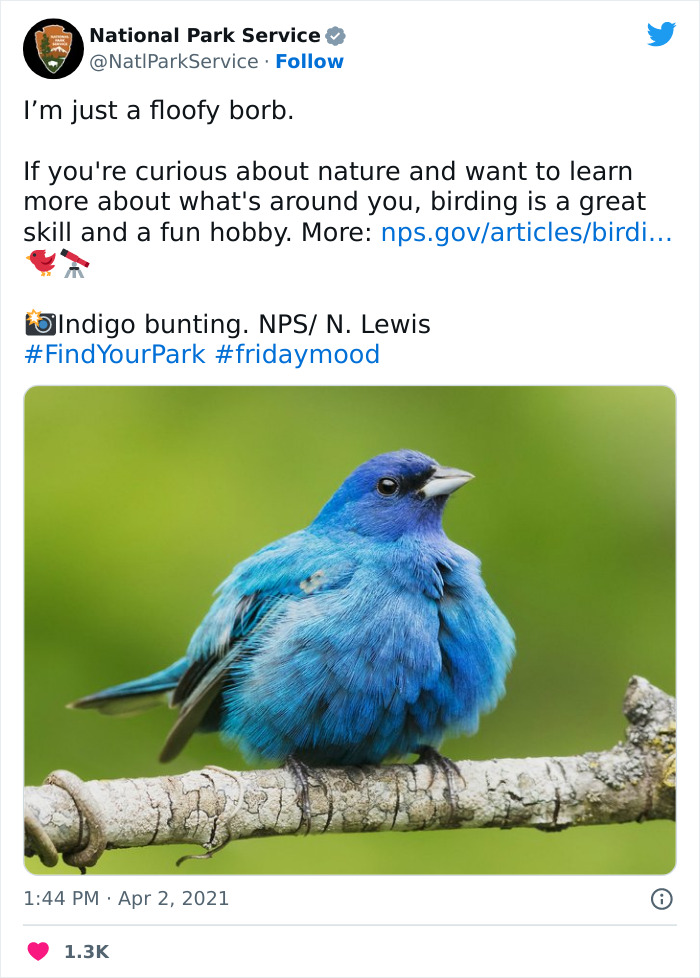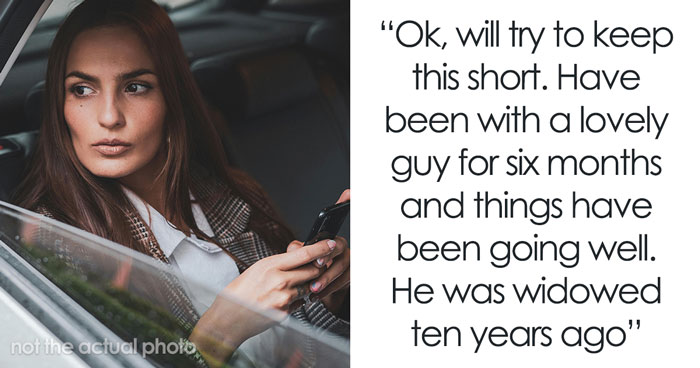
National Park Service Hired The Perfect Social Media Person As Their Tweets Are Hilarious So Here Are 34 Of The Best Ones
Various social media sites are there for a little bit of fun and connecting with people, so it took some time for various businesses and organizations to realize they could use it to spread their message as they worried about their image.
Now even government agencies have Twitter, Instagram and Facebook accounts and are starting to use TikTok as well. Most of them will announce relevant information, updates and new policies, which is a convenient way to quickly inform people.
But they are evolving even further. National Park Service social media pages show that government agencies have a sense of humor. The captions they write alongside pictures from their national parks are hilarious, but also informative, which is probably why their Instagram account is followed by over 4 million people.
More info: Twitter | Facebook | Instagram
This post may include affiliate links.
National Park Service (NPS) is a government organisation within the U.S. Department of the Interior founded in 1916. It manages all national parks, most national monuments and other special places that need safeguarding.
Recently the organisation gained a lot of popularity on its social media platforms for the hilarious posts. The most successful one is Instagram where 4.4 million people follow what they post, the Facebook account has 1.7 million followers and on Twitter they are nearing 1 million followers.
The mind behind the unexpectedly funny posts for this government agency is Matthew Turner. He started managing the accounts in 2018 and he saw a quick growth on Instagram. As he told Trust For Public Land, “The account hit a million followers last summer [2019] and crossed 2 million this past fall [2019].”
Matthew Turner has a degree in History and Anthropology, so he wasn’t exactly aiming for the social media manager position. He started out as a Visitor Use Assistant at Fort Pulaski National Monument in Georgia. A little bit later, he worked as a guide and front-line interpreter at Lincoln Home National Historic Site in Illinois and Harry S Truman National Historic Site in Missouri. These positions naturally pushed him to use social media as a way to interact with visitors and potential visitors.
Now he really enjoys this job and he revealed the best parts of it when talking to Rachel Karten of Link In Bio: “Social media really keeps you on your toes. It’s changing all the time which can be exciting to navigate your way through the challenges of sustaining an audience, looking to expand your offerings, and staying on brand and message.”
There is no denying that the posts are truly funny, but you may feel that it’s inappropriate for a government organisation to become too similar to a meme page. Matthew, however, knows what he’s doing.
He told AAA, “Across the platforms, it's about holding that fine line of government agency pushing out important messages and educating people as we welcome them. The humor is often used to draw people in. But beyond the funny, there is usually a safety message, a deeper dive into park resources or policy, or a fun fact.”
As Matthew explained to Trust For Public Land, the purpose of the funny posts isn't just to make people laugh, but it’s always “to communicate important information: don’t get too close to wildlife, be aware of surroundings, respect the resource, as well as offer travel tips and park news.”
The reason behind the humor and the pop culture references is that it is surprising, it grabs the attention and it resonates with people, especially when the funny captions are coordinated with pictures that were actually taken in the national parks the organization manages. It shows that there is a person behind the social media handle and you get curious what they will post next.
There is no doubt that people who work with social media are fun and creative personalities, but usually, they are not allowed to go wild and have to maintain a certain image, portraying a certain vision of the company they work for.
But what gives them the right to continue with their silly posts is the results it brings. Sarah Southerland, communication and education specialist at the Oklahoma Wildlife Department, said that after they posted a cute picture of a mountain lion with a funny caption that also warned people not to treat them as pets, it went viral.
Because it had over 120k likes and more than 14k retweets, it gave the social media managers “the green light from the higher-ups that like, hey, you know, this works better. Because, you know, 40 million impressions is better than like 200 impressions,” which was the amount before.
The humorous approach really works and people not only get a laugh, but also learn more about national parks, about the wildlife there and what to do when you find yourself face to face with a bear.
Which of these posts are your favorite? Did you know about this side of government agencies? Will you follow NPS for more? Let us know your reactions and what is your opinion about government organizations being more relaxed on social media in the comments.
don't go too far or the extention cord will run out
Load More Replies..."Hey, Boo-Boo, let's go get us a pic-a-nic basket" (in voice of Yogi Bear)
"But Yogi, Mr. Ranger isn't going to like this."
Load More Replies..."Can't, gotta work. Need good (legal) drugs to function but need to pay for them."
I'd give anything to be sitting there right now! I love: camping, hiking, fishing, cooking over a fire.
It's "Are You Being Served?" Someone at the Parks Service is a genius.
What's even greater about these pictures is that they, and the texts, are out of copyright, and you can use them without written permission in your company brochure or inspirational poster. Anything produced with taxpayer money is in the open domain (unless it's classified, of course).
There is some copyright you need to observe. For example NASA images is public domain unless it is their logo or a member of their staff such as engineers, astronauts and so on. Photo of planets and spaceships is public domain, photos of their logo and people is not public domain.
Load More Replies...Whoever runs this page is amazing 🤣🤣🤣🤣🤣🤣🤣🤣🤣🤣🤣🤣🤣🤣 (think I've found my new bestie)
I worked for the NPS for 20 years at Independence National Historical Park in Philadelphia, PA. The big city but we did get to visit many other parks and monuments over the years. Awesome places!
That you used the UK and American spelling of organization. Great selection!
Why is the US National Park Service twitter funnier than most TV comedians 😭
Wonderful comments by the Parks guy spoiled by the inane comments of readers who just didn't get them.
Matthew needs a raise! Raise your hand if you're going to start checking NPR's feeds. :)
What's even greater about these pictures is that they, and the texts, are out of copyright, and you can use them without written permission in your company brochure or inspirational poster. Anything produced with taxpayer money is in the open domain (unless it's classified, of course).
There is some copyright you need to observe. For example NASA images is public domain unless it is their logo or a member of their staff such as engineers, astronauts and so on. Photo of planets and spaceships is public domain, photos of their logo and people is not public domain.
Load More Replies...Whoever runs this page is amazing 🤣🤣🤣🤣🤣🤣🤣🤣🤣🤣🤣🤣🤣🤣 (think I've found my new bestie)
I worked for the NPS for 20 years at Independence National Historical Park in Philadelphia, PA. The big city but we did get to visit many other parks and monuments over the years. Awesome places!
That you used the UK and American spelling of organization. Great selection!
Why is the US National Park Service twitter funnier than most TV comedians 😭
Wonderful comments by the Parks guy spoiled by the inane comments of readers who just didn't get them.
Matthew needs a raise! Raise your hand if you're going to start checking NPR's feeds. :)

 Dark Mode
Dark Mode 

 No fees, cancel anytime
No fees, cancel anytime 














































































